SOUTH GEORGIA AND ANTARCTICA
__________________
__________________
| Day | Place | Highlights |
|---|---|---|
| Day 1 | Puerto Williams | Embarkation |
| Days 2 - 4 | At Sea | Relax visit the spa or gym, whale watching and attend lectures |
| Days 5 - 7 | South Georgia | Charcoal-black mountains ladled with snow, giant glaciers, thriving wildlife including King penguins and Shackletons memorial |
| Days 8 & 9 | Drake Passage | Sail past Cape Horn, South Shetland Islands, attend lectures, keep an eye out for seabirds and marine life |
| Day 10 | Elephant Island | Endurance Glacier, Shackleton's monument, gentoo penguins |
| Days 11 & 12 | Antarctic Peninsula | Snow-blanketed landscapes and colossal ice sculptures, wildlife, thousands of Adelie penguin and excursions |
| Day 13 | South Shetland Island | Encounter elephant seals, and crowds of Gentoo, Chinstrap and Adelie Penguins |
| Day 14 | Drake Passage | South Shetland Islands, attend lectures, keep an eye out for seabirds and marine life |
| Day 15 | Cape Horn and Puerto Williams | Cruising Cape Horn and disembark Puerto Williams |
| Day 16 | Puerto Williams | Located Navarino Island on the Southern Shores of the Beagle Channel, farewell your fellow expeditioners. |
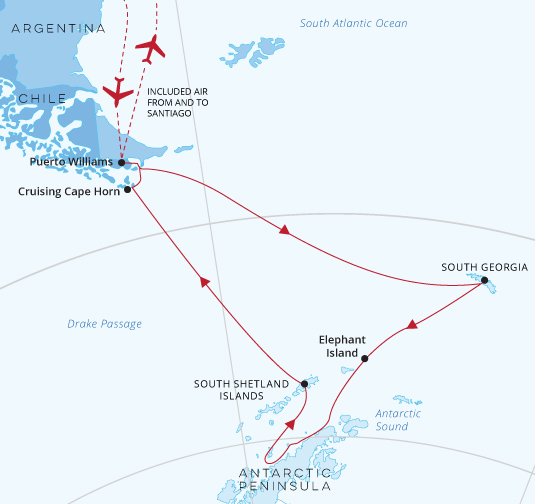
The Silver Wind is a modern and luxurious ship providing cosy ambiance for the 240 passengers on board (she has capacity for 254 passengers but only takes 240 to Antarctica). Originally built in 1995, she has undergone refurbishments in December 2018 with a second planned for summer 2020. She is timelessly elegant and full of opulence throughout all of her 6 passenger decks. Her new and improved strengthened ice-class hull makes for ease and adaptable sailing through the Polar Regions for whatever the conditions may bring.
With four different dining options, multiple bars, a library, on board casino, theatre, boutique and Silversea’s signature personalised butler service your days at sea can be as action packed or relaxing as you decide. The seven different suite options ensure that there is accommodation for everyone, sparing no design features throughout.
Spacious yet intimate, the yacht-like Silver Cloud carries 240 guests in incomparable comfort and style combining spacious ocean-view suites and private verandas with excellent dining and entertainment options. Silver Cloud epitomizes a vision of world-class cruise accommodations, cuisine, service and amenities.
The Silver Cloud is equipped with a fleet of zodiacs and expert guides to escort you on excursions from the ship.
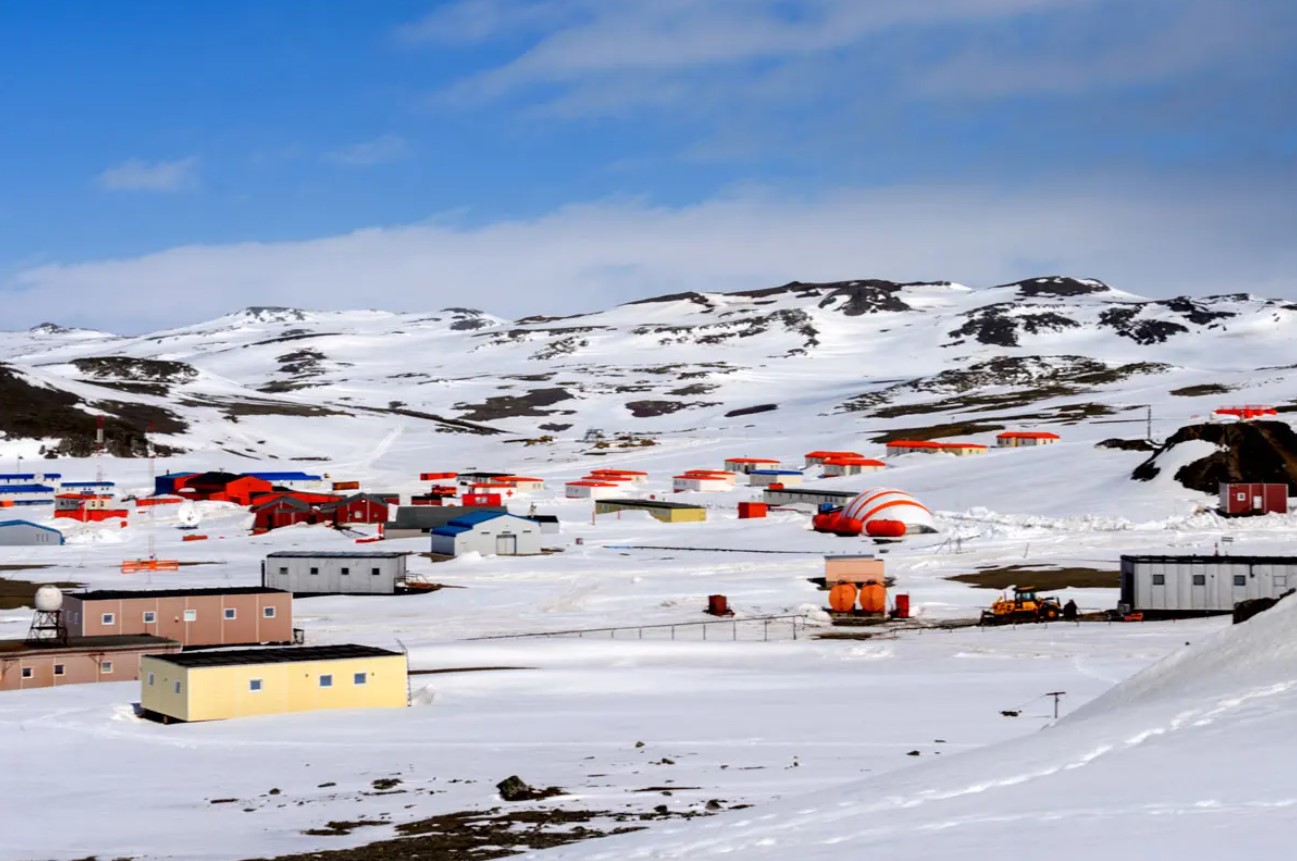
As the largest of all the South Shetland Island, King George is considered the gateway to Antarctica. At just 120 kilometres from the Antarctic Peninsula and the only airport in the South Shetlands, it is the connection between “real life” and “Antarctic life”. More than 10 different nations have year-round or summer-only scientific research stations on the island (considering that 90% of the island is covered by snow and ice, that is quite an achievement!). Maintaining a base on the island allows membership of the Antarctic Treaty. There is even a Russian Orthodox church, with a permanent on-site priest. The island might be home to a few international scientists, but they are very much outnumbered by the diverse wildlife that considers King George Island rightfully theirs. Adelie, Chinstrap and Gentoo Penguins all commute to and from the Antarctic peninsula from the island, while Weddell and leopard seals are regular visitors and can be spotted either in the water or on the shore. Naturally, this brings a huge amount of birdlife: skuas and southern giant petrels are regular summer residents, attracted by the warm climate (warm being a relative term, average temperature is between 1.5 and -6.5˚C). The island was named after King George III after British explorer discovered it in 1819. Since then the island has been claimed by both Chile (1940) and Argentina (1943), but remains part of British Antarctic Territory.
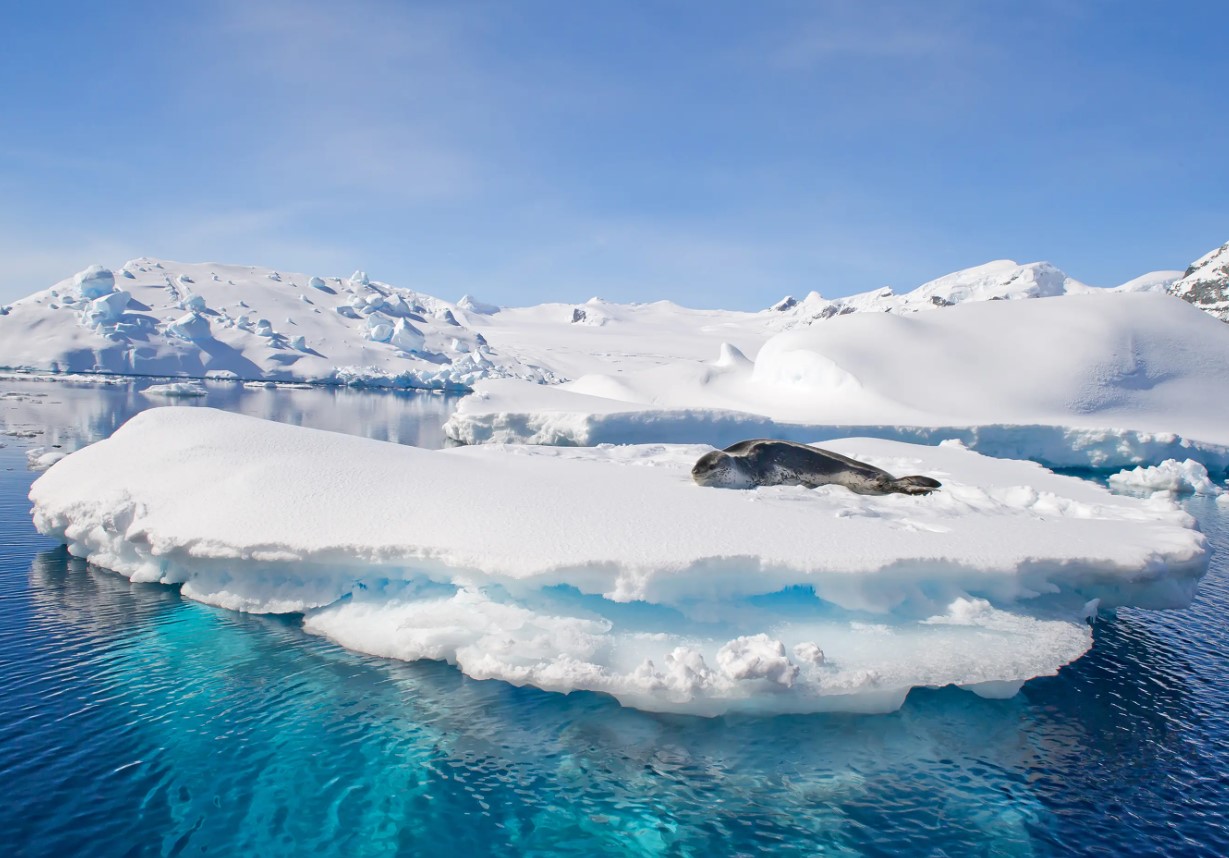
The Antarctic Peninsula unravels upwards towards South America, reaching out a beckoning finger to the adventurous, who dare to explore this untamed realm. Stretching up from the heart of the world’s southernmost continent, the Antarctic Peninsula lies a mere 620 mile from Tierra del Fuego and, for many, offers a spectacular first taste of the snow-blanketed landscapes and colossal ice sculptures, which make up Earth’s least-explored continent. Unseen by humans until 1820 – a blink of an eye ago in relative terms – this is an adventure sure to make your hairs stand on end, as you experience the thrill of the truly unknown and extraordinary. The vast peninsula is sprinkled with research bases, which are at the frontline of human scientific endeavour, pushing to study and understand this unique landscape, its exceptional wildlife, and the impact that humans are having on this pristine continent. Witness cathedral-sized icebergs up close, and blue-hued glaciers, slowly slipping from imposing locations like Hope Bay. Blanched mountain peaks cover the peninsula, and you’ll find thousands of adorable Adelie penguin pairs thriving undisturbed in this peninsula’s unique setting.
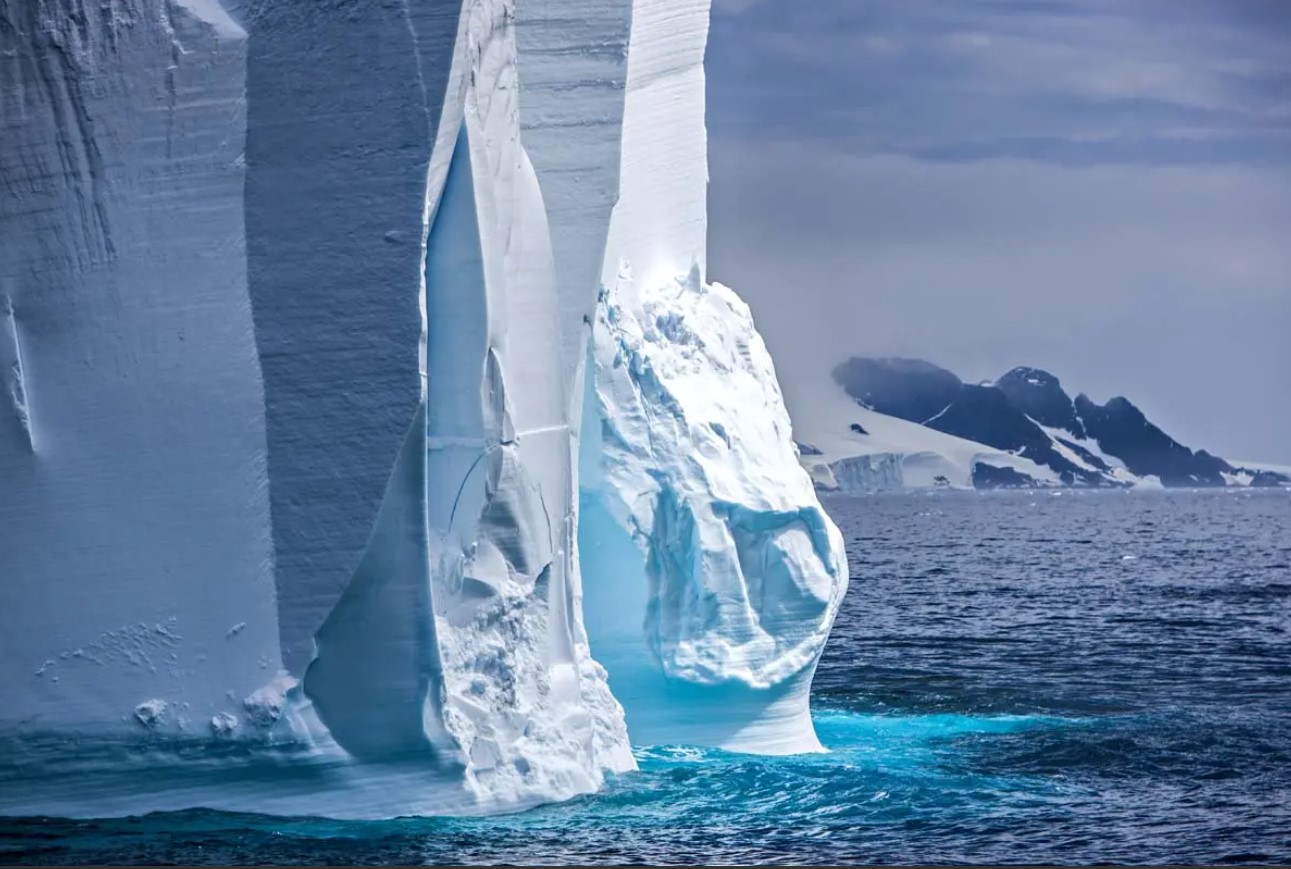
Few voyages ignite the imagination like a journey down to one of the planet’s most remote, extreme and enchanting wilderness, Antarctica. An adventure in its purest form, only a handful of people will ever be lucky enough to experience the majestic beauty of these monochrome landscapes first-hand. The Antarctic Sound will be one of your first encounters of this whitewash kingdom, located at the northerly tip of the Antarctic Peninsula – which sprawls up like a tentacle towards Tierra del Fuego, South America’s most southerly point, otherwise known as the ‘End of the World’. Taking its name from the first ship to brave the passageway between the peninsular and the Joinville Island groups back in 1902, the Sound is a raw, sensory assault of imposing iceberg slabs, broken away from the disintegrating Larsen Ice Shelf. Come face-to-face with stadium-sized islands of ice and meet the extraordinary birdlife that call this whitewash kingdom home. Watch on, as colonies of Gentoo penguins hop around, and cape petrels sweep overhead, as the continent’s unique wildlife thrives around you. If you’re planning your first venture into Antarctica, you’ll want to brush up on your photography skills in advance, to capture this unforgiving continent in all of its unrestrained glory.

Sailing the legendary Drake Passage is an experience that few are ever lucky enough to experience. The southern tip of the Americas already feels like a wild enough environment – but the sensation of watching the distant cliffs of the peninsular known as the ‘End of the World’ fade into the horizon, is one that’s equal parts epic, eerie and magical. Set sail, to slowly drop off the bottom of the map from Cape Horn, and voyage on an expedition down into the icy underworld of Antarctica. Drake Passage is an extraordinary voyage of romantic ocean faring legend, as you aim for Antarctica’s icy realm. On arrival, skyscraper sized icebergs salute you, as you traverse the waters of this continent where snow and ice dwelling creatures like penguins and whales roam undisturbed. Your first sight of this most-unexplored place will most likely be the South Shetland Islands. Walk in the footsteps of some of history’s greatest and bravest explorers as you explore famed, snow-covered landmasses like Elephant and Deception Island. If the journey across Drake Passage sounds daunting, don’t worry – even in rough seas you’re never alone, and will often be accompanied on this spine-tingling adventure by soaring albatrosses and maybe even a protective pod of humpbacks and hourglass dolphins or two. Converging warm and cool ocean currents attract some spectacular animal life to the passage.
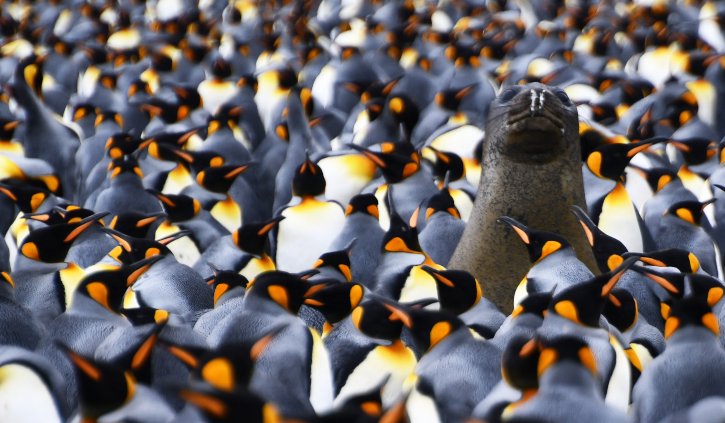
Charcoal-black mountains ladled with snow, giant glaciers and thriving wildlife combine to make South Georgia one of the great natural islands. Adventure to these far flung lands – where the animals are in charge and humans come a distant second. Here you’ll witness a cacophony of calling birds, natural set pieces like elephant seals clashing and thrashing, and crowds of colourful king penguins stretching out as far as the eye can see. An overseas territory of the UK, these isolated, subantarctic islands once formed a remote whaling centre – and you can still visit the former whaling stations. Nowadays the giants of the sea are free to cruise the icy waters uninhibited. Written into explorer history due to its links with Ernest Shackleton’s tale of Antarctic exploration, shipwreck and survival, the Endurance’s crew were saved when he reached the salvation of these shores in 1916 – before returning to collect the remaining sailors from Elephant Island. A museum commemorates the legendary mission, and you can see the memorial to Shackleton that stands over his final resting place on this fabled island. South Georgia’s colonies of king penguins – with vivid bursts of yellow and orange around their necks – stand, squabble and curiously investigate, enjoying the isolated respite of this island. They’re joined by smaller penguin species like Macaroni penguins, and other glorious birdlife like the majestic wandering albatrosses, which you can see gliding on gusts of wind, over the choppy waves.
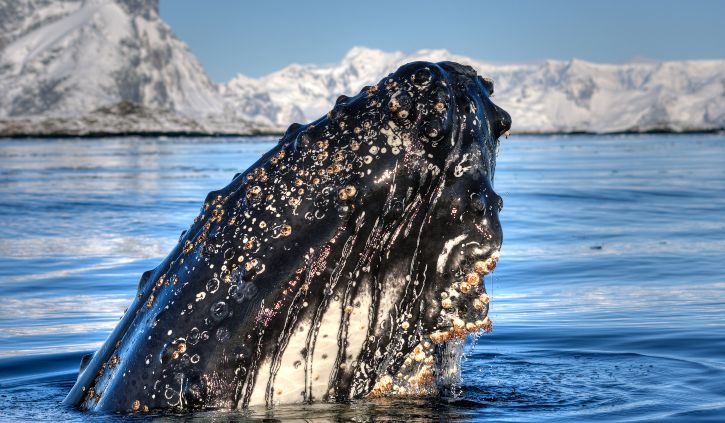
Days at sea are the perfect opportunity to relax, unwind and catch up with what you’ve been meaning to do. So whether that is going to the gym, visiting the spa, whale watching, catching up on your reading or simply topping up your tan, these blue sea days are the perfect balance to busy days spent exploring shore side.
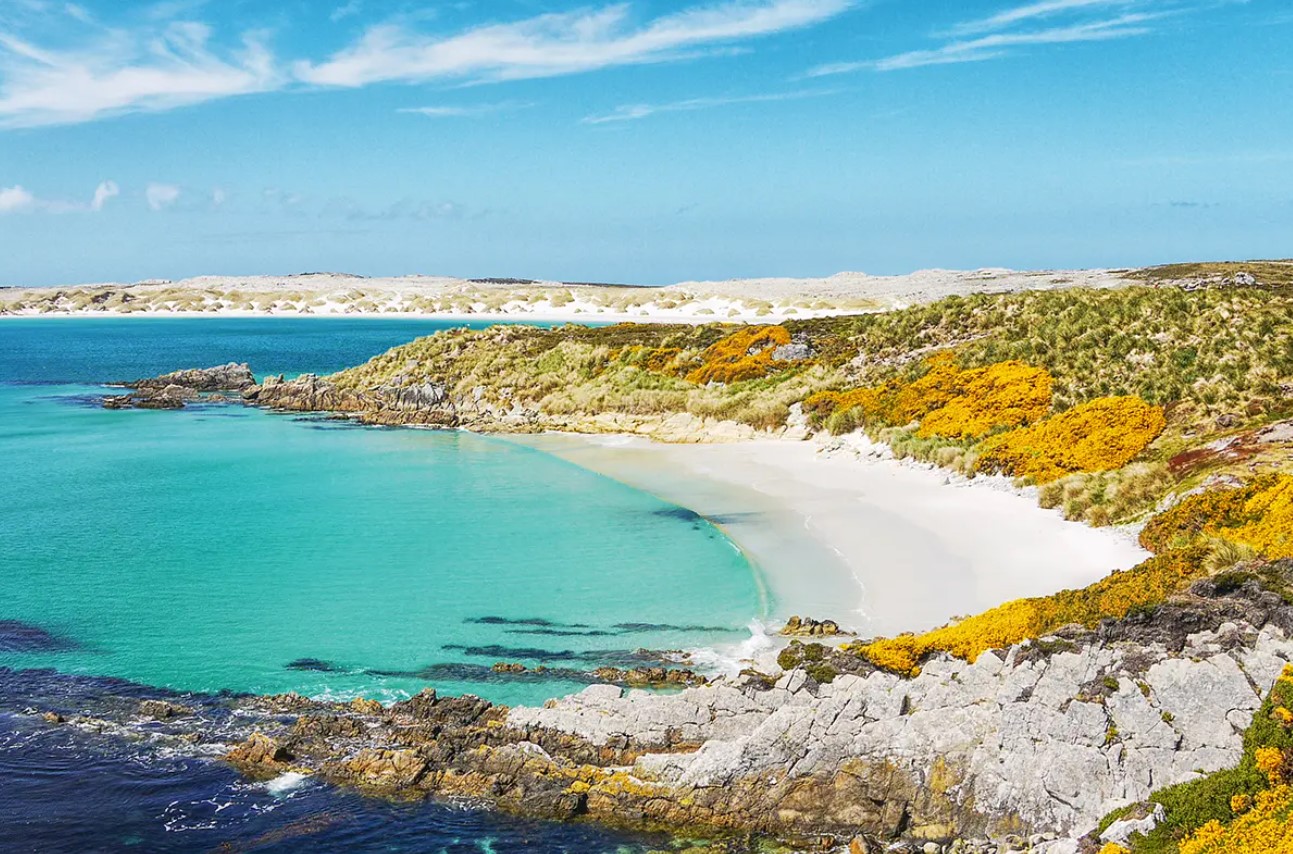
Despite it being a stalwart of Britishness, Stanley more resembles Patagonia than Portsmouth. But, despite the windswept, vast and achingly beautiful landscape of the Falkland Islands, don’t be too surprised to find the odd pub serving ales and even fish’n’chips. While landmarks such as Christ Church Cathedral, with its whalebone arch are 100% local, there is a also good smattering of imported garden gnomes and Union Jacks to remind you whose territory you are really on. The Falkland Islands’ ownership has long been a matter of controversy, ever since colonisation in the 18th century. At various points in their life they have been considered French, British, Spanish and Argentine. The Falklands War in 1982, despite only lasting for a short while, proved that the Brits clung to this remote outpost and the islands remain part of the British Commonwealth today. Margaret Thatcher, under whom the war was masterminded, remains something of a local hero as can be seen in the street signs (such as Thatcher Drive). For those who want to dig deeper into the past, the Historic Docklands Museum provides lots of information on the chequered historical and political background of the Falklands. However, the true heroes of Stanley are of course the thousands and thousands of penguins. Five species nest here during mating season (including the rare rockhopper penguin). There are virtually no barriers between you and the wildlife; allowing for a truly interactive, authentic and totally unforgettable experience.
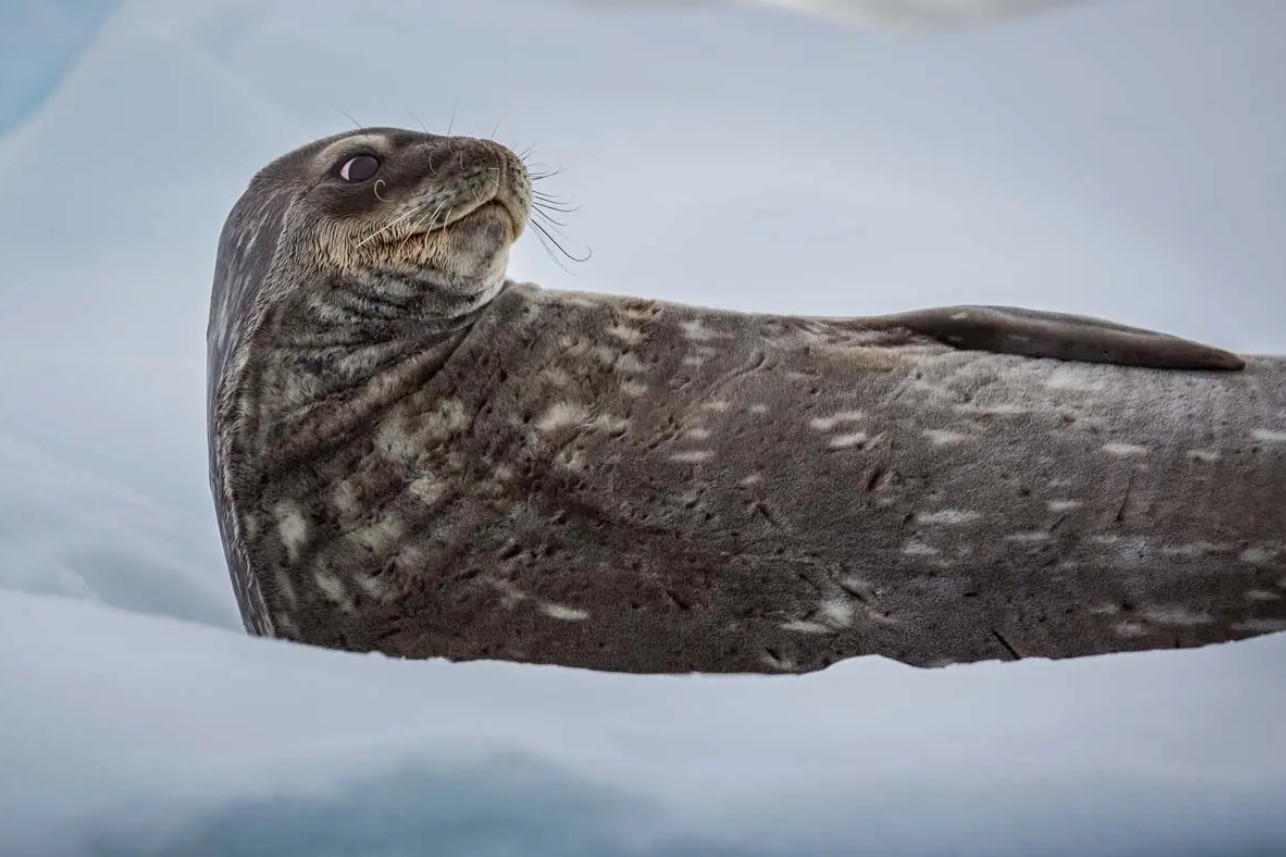
A north-westerly outpost of the scenic Falkland Islands, you’ll be welcomed ashore by the calls and cries of a huge colony of black-browed albatross. Indeed, the island was originally known as Albatross Island before being renamed to reflect its geographic location. While the albatrosses – that flash white feathers in the rugged cliffs above the waves – are the most well known residents, they are far from the only animal inhabitants of this remote, isolated land. A huge army of birdlife calls the island sanctuary home, overwhelming the tiny human population and sheep that roam West Point Island’s grasses. Meet the rockhopper penguins who scamper and burrow along the coast’s boulders, as well as the imperial cormorants who rest here in great numbers. You’re also liekly to encounter Magellanic penguins during your explorations. Hike the island’s quiet landscapes, and look out for endemic plants like Felton’s flower carpeting the green interior. Decorated with some of the archipelago’s most dramatic scenery, explore this wind-lashed, distant land of soaring cliffs and towering coastal precipices. Cliff Mountain is the island’s standout – a towering sandstone monolith, and the archipelago’s highest cliff, falling away to swirling waves below. Look out to the waters to spot Commerson’s dolphin chasing each other around the island’s wave-washed footprint. Whales also visit, as well as the fur seals who you may spot lounging around West Point Island’s inviting shores.
Remote and raw, New Island lies to the west of the Falkland Islands, and the humble human population here is far outweighed by the extraordinary birdlife that resides along its craggy coastline. Out in the tempestuous wilds of the South Atlantic Ocean, the island is a sanctuary of animal life – with crowds of rockhopper penguins, wrinkled seals and stern-looking albatross among its many residents. The penguins of the Falklands are a sight to see, fooling and falling on the beaches, before diving in and whipping through the waters. Home to five different species, including king penguins – who strut with their orange collars glowing against the pure white feathers of their chests. Sea lions, seals and elephant seals bark and lumber along the shoreline, while sleek orcas patrol and Peale’s dolphins cut through the waves. Settlement Rookery’s cliffs rattle with the sounds of crashing sea waves, and the echoing shouts of hollering black-browed albatross, king cormorants and rockhopper penguins. Enjoy gorgeous sweeping landscapes, littered with shipwrecks and sprinkles of colourful wildflowers. A warm welcome is guaranteed, especially when the local custom of smoko is served up – towering platters of cakes and biscuits with tea and coffee. Things haven’t always been so peaceful here, however, and you can pay a visit to the battlefields and memorials of the costly war in 1982, when the British and Argentinians clashed fiercely over these islands.
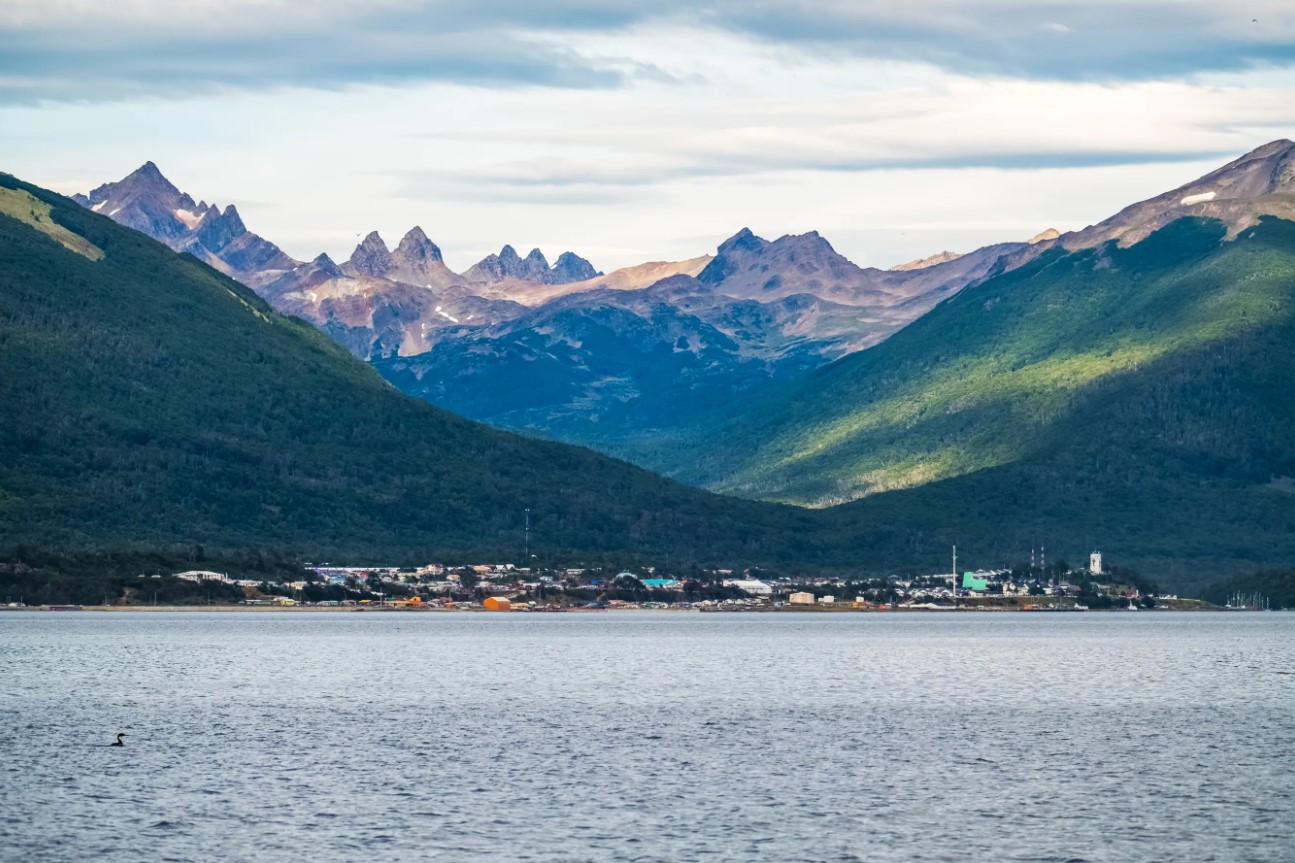
Puerto Williams is a Chilean city located on Navarino Island on the southern shores of the Beagle Channel. It claims to be the “southernmost city in the world”, however owing to its small size – 2500 residents approximately – the much larger Argentinean city of Ushuaia, which sits on the northern side of the same channel, also claims that title. The surrounding scenery is magnificent. The wild windswept mountains rise above the tree line and are regularly dusted with snow. The city itself has the dramatic backdrop called “Dientes de Navarino” (literally “teeth of Navarino”), which rival the famous Torres del Paine further to the north. The area was originally used by the Yaghan people, hunter-gatherers who despite enduring the harsh regional climate, could not weather the arrival of Europeans. The current city was established as a naval base in 1953 and honours the British-Chilean naval commander John Williams Wilson of the 16th century. Initially it served to protect territorial possessions and fishing rights of the area, as well as offering logistical support to Antarctic bases. More recently it has become a departure point for scientific and tourism trips to the Antarctic region. In contrast to the bustle and traffic of a very commercial Ushuaia, Puerto Williams offers a quieter, more relaxed experience. It charms the visitor with a small village feel, complete with rustic buildings and the homely smell of drifting wood smoke. A haven of peace at the end of the world.